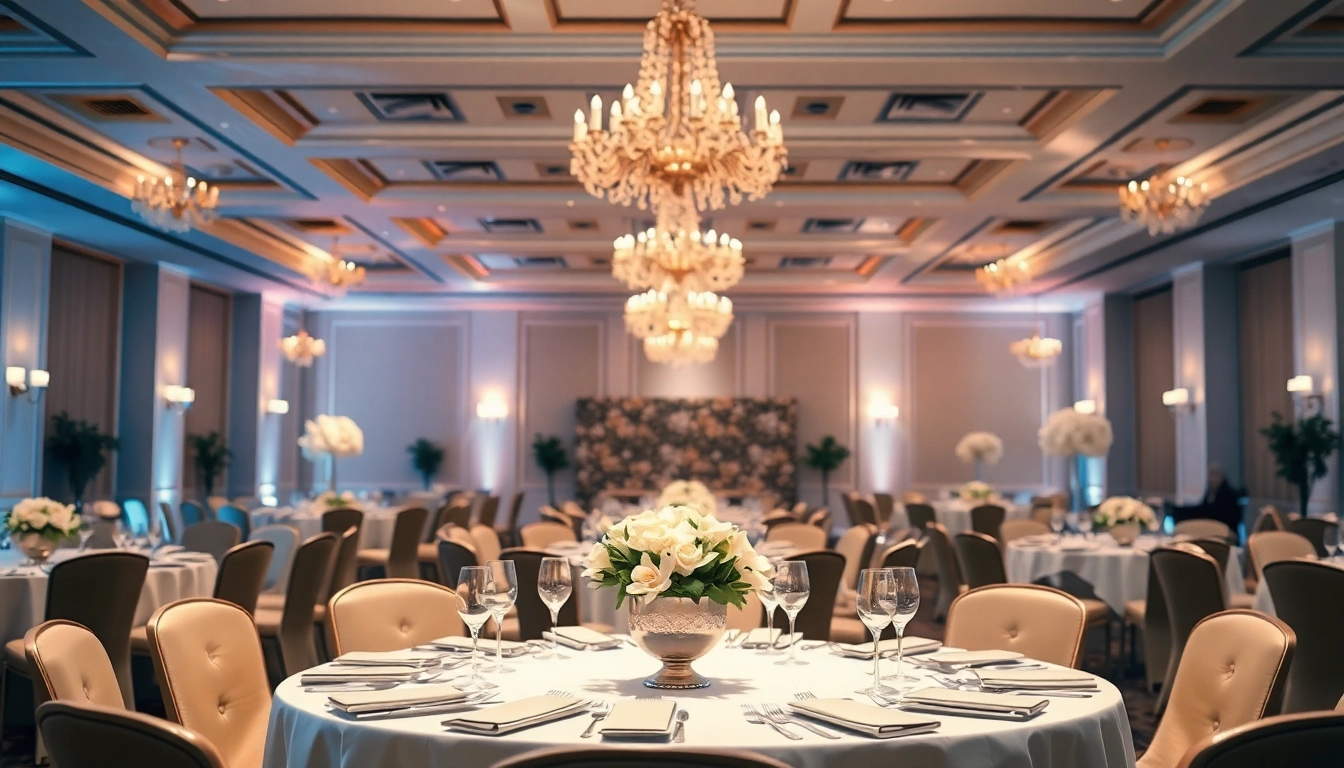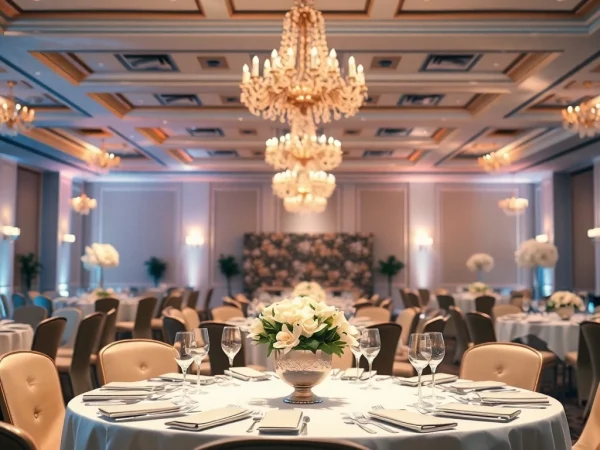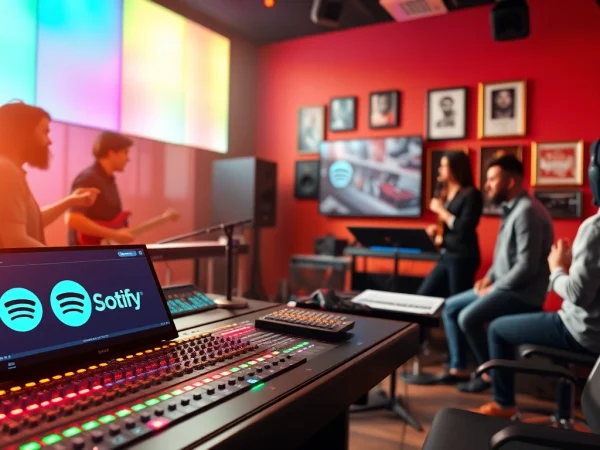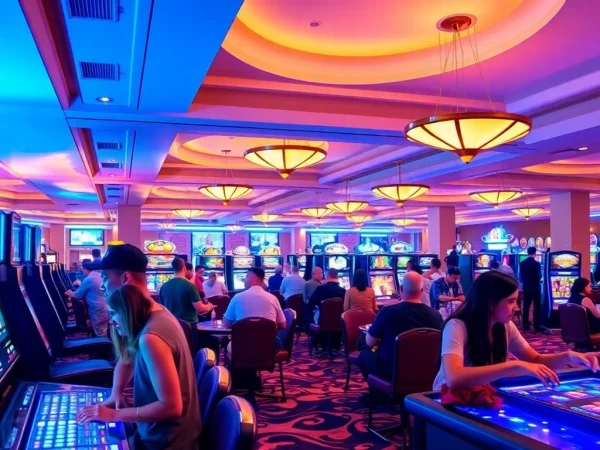Creating the Perfect Event Space: Tips for Stunning Gatherings
Understanding Your Event Space Needs
When planning an event, whether it’s a corporate gathering, wedding, or a private party, understanding your specific event space needs is crucial. This entails more than just picking a location; it involves analyzing the purpose of the event, capacity requirements, and the ideal location. An informed approach helps ensure that your event is not only successful but also memorable for all attendees.
Defining the Purpose of Your Event Space
The first step in selecting your event space is clearly defining the purpose of your gathering. Are you looking to host a formal business meeting, a wedding reception, or perhaps a casual networking event? Each of these occasions has distinct requirements in terms of ambiance, layout, and capacity.
Understanding the essence of your event dictates not just the space needed but also influences other critical factors, including catering, decor, and technology requirements. For instance, a wedding may require an aesthetically pleasing environment with areas for both ceremony and reception, while a business meeting may prioritize a quiet, professional setting with audiovisual needs.
Identifying the Ideal Capacity for Your Event Space
Once the purpose is clear, the next consideration is the capacity of your event space. It’s essential to determine how many guests you expect. This can often be dictated by the type of event you’re hosting. An intimate gathering may work well in a smaller, cozy venue, while larger events require expansive spaces to accommodate guests comfortably.
Choosing a venue that fits your anticipated guest list gives a sense of exclusivity for smaller gatherings while avoiding overcrowding for larger groups. It’s helpful to prepare a rough estimate of attendees, allowing some flexibility to account for changes in RSVPs.
Choosing the Right Location for Your Event Space
The location of your selected event space is equally pivotal. Factors to consider include accessibility, parking availability, and the surrounding area’s ambiance. Is the venue easy for your guests to find? Are there hotels or public transportation options nearby for out-of-town attendees?
Additionally, think about the neighborhood—does it match the theme of your event? An informal gathering may benefit from a vibrant area with nightlife, while a formal business meeting might be better located in a quieter, professional district. It’s wise to explore venues in various neighborhoods, comparing the pros and cons of each location.
Designing an Inviting Event Space Layout
Once you have identified the purpose, capacity, and location of your event space, the next step is to design a captivating layout. A well-planned arrangement enhances guest interaction and creates a welcoming environment.
Arranging Furniture for Optimal Flow in Your Event Space
The way furniture and amenities are positioned significantly affects the flow of an event. For example, in a networking event, you might want to create a more open area to facilitate interaction among attendees, whereas a formal dinner might require clearly defined table arrangements.
Consider the use of different zones within your event space such as a check-in area, lounge, presentation area, and refreshment stands. Ensuring an easy flow between these areas prevents congestion and improves guest experiences.
Selecting Appropriate Decor Elements for Your Event Space
Decor is not merely an aesthetic choice; it plays a crucial role in setting the mood of your event. Selecting decor that resonates with the occasion is essential. Use colors, textures, lighting, and theme-consistent elements to create an immersive experience for attendees.
Incorporating personal touches, such as photographs or memorabilia relating to the event theme, can add warmth and make the space feel special. Planning ahead to decide on decor logistics, such as set-up and break-down times, ensures a seamless process.
Incorporating Technology Into Your Event Space
Modern events often rely on technology to enhance communication, entertainment, and engagement. Consider what technological assets are necessary for your gathering. Do you need screens for presentations? Is audio equipment essential for music and speeches?
Ensuring that you have the right technology in place not only provides necessary support but helps to create a professional atmosphere. Make arrangements for technical support on-site to assist with any issues that may arise.
Budgeting for Your Event Space
After planning the layout and decor, the next important step is budgeting effectively. Creating a realistic budget is vital to help manage expenditure and navigate unexpected costs that may crop up during the planning phase.
Understanding Venue Rental Costs for Your Event Space
Venue rental fees can vary widely depending on the space, timing of the event, and additional services included. Take time to understand what is included in the rental price as this can influence your overall budget.
Inquire about rental packages that may encompass all essential services, such as catering, furniture rentals, and AV equipment. Occasionally, these bundled services can help save costs, making them a viable option.
Allocating Budget for Equipment in Your Event Space
In addition to the venue cost, budgeting for equipment is an essential part of the overall plan. This includes not only AV equipment and furniture rentals but also items needed for catering or other services you may require.
Don’t forget to allocate a portion of your budget for unexpected equipment needs that may arise; having a contingency plan helps you stay on track financially.
Considering Hidden Costs of Your Event Space
Hidden costs often catch event planners off guard. These may include service fees, tips for staff, cleaning fees, and insurance coverage. Taking time to review all cost components makes sure that your budget reflects the complete financial responsibility of your event.
Maintaining transparency with your venue and suppliers can help clarify any surcharges that may emerge, keeping budgeting efforts accurate and effective.
Marketing Your Event Space Effectively
Once everything is planned, marketing your event space is paramount to securing attendance and engaging your target audience. Effective marketing strategy leverages both online and offline channels to maximize reach.
Understanding Target Audience for Your Event Space
Identifying your target audience is crucial. Depending on the nature of your event, different marketing strategies may apply. For instance, if you’re organizing a corporate event aimed at professionals, consider platforms like LinkedIn for advertising.
Your marketing materials must resonate with your audience to engage them effectively. Utilize language, visuals, and themes that directly appeal to their interests and demographics.
Utilizing Online Platforms to Promote Your Event Space
Leveraging social media platforms and responsive websites is an essential aspect of promoting your event space. Creating engaging posts and utilizing content marketing strategies can help attract attention to your event.
Consider employing event-specific landing pages, encouraging pre-registration, and utilizing email marketing to capture interest. Engaging visually through photos and videos of previous events can also provide social proof of your venue’s appeal.
Creating Engaging Content Around Your Event Space
Crafting informative and engaging content centered on your event space can enhance your marketing efforts. This could include blog posts, videos, and testimonials from past attendees or planners.
Such content not only aids in promotion but also builds a sense of community and belonging around your venue, fostering loyalty and encouraging return visits.
Measuring Success After Your Event Space Gatherings
After hosting an event, it is essential to gauge its success. Measuring outcomes helps identify areas of improvement, ensuring future events are increasingly effective and enjoyable.
Gathering Feedback on Your Event Space Experience
Soliciting feedback from attendees provides valuable insights into their experiences. This can be accomplished through surveys, review requests, or informal conversations post-event. Identifying both the strengths and weaknesses of your event space will offer clarity on what works well and what requires improvement.
Recognizing common themes in feedback can better inform future planning, allowing you to refine your design, layout, and marketing strategies accordingly.
Analyzing Attendance and Engagement Metrics for Your Event Space
Metrics such as attendance numbers, guest interactions, and social media engagement can provide quantitative data on event success. Use analytical tools to track these metrics over time, developing benchmarks for future events.
Understanding trends within these statistics is essential for strategic decision-making moving forward. Comparing actual attendance to anticipated numbers can shed light on marketing effectiveness and help adjust future outreach efforts.
Implementing Improvements for Future Event Spaces
Using both qualitative feedback and quantitative data, strategize improvements for future events. Whether it’s reorganizing the venue layout, choosing different catering options, or trying new marketing avenues, continuous improvement is paramount to maintaining success and satisfaction.
Regular evaluations and willingness to adapt to feedback create a thriving environment for your event space, ensuring that you consistently offer outstanding experiences for your guests.










